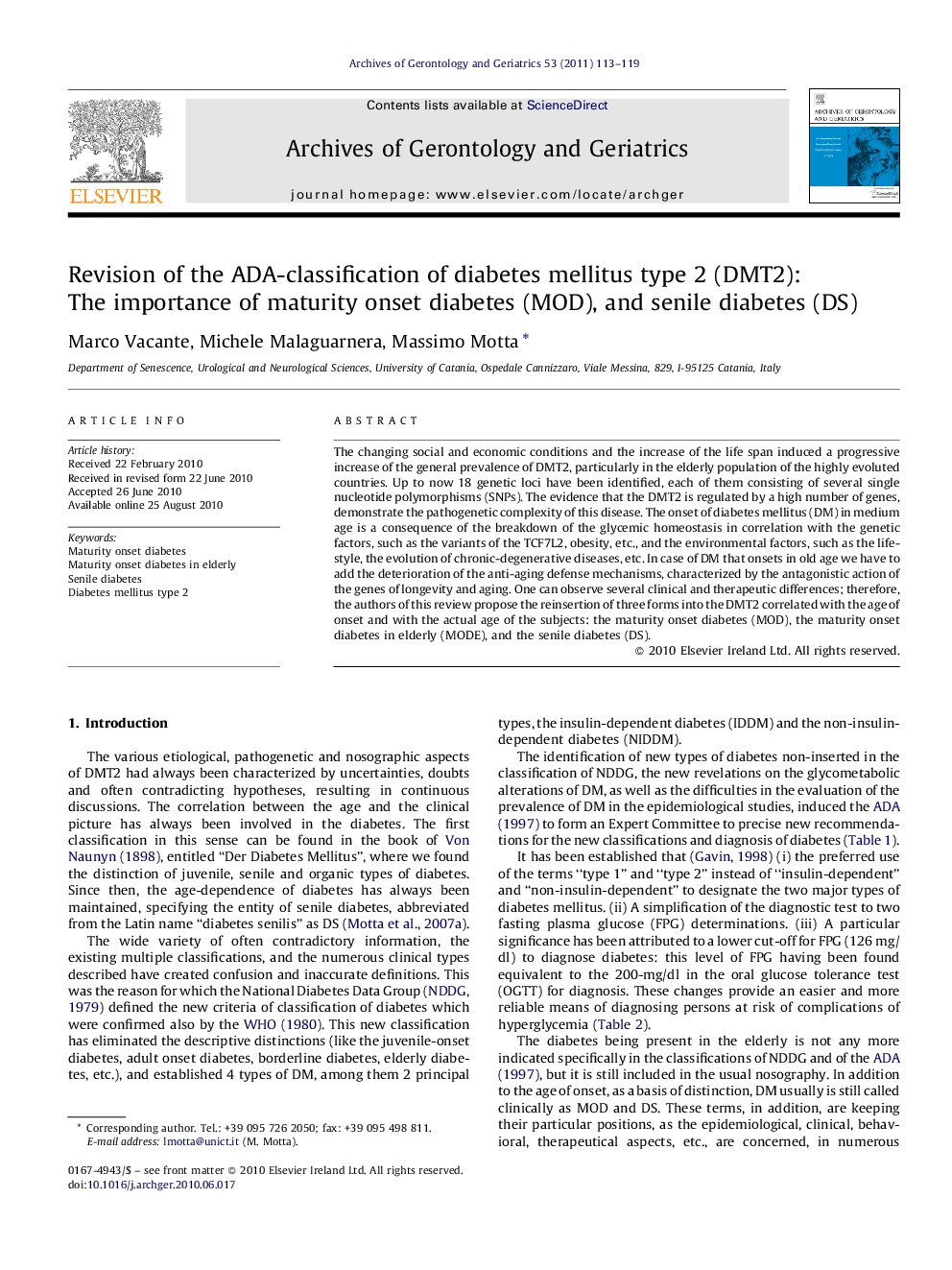| Article ID | Journal | Published Year | Pages | File Type |
|---|---|---|---|---|
| 1903056 | Archives of Gerontology and Geriatrics | 2011 | 7 Pages |
The changing social and economic conditions and the increase of the life span induced a progressive increase of the general prevalence of DMT2, particularly in the elderly population of the highly evoluted countries. Up to now 18 genetic loci have been identified, each of them consisting of several single nucleotide polymorphisms (SNPs). The evidence that the DMT2 is regulated by a high number of genes, demonstrate the pathogenetic complexity of this disease. The onset of diabetes mellitus (DM) in medium age is a consequence of the breakdown of the glycemic homeostasis in correlation with the genetic factors, such as the variants of the TCF7L2, obesity, etc., and the environmental factors, such as the life-style, the evolution of chronic-degenerative diseases, etc. In case of DM that onsets in old age we have to add the deterioration of the anti-aging defense mechanisms, characterized by the antagonistic action of the genes of longevity and aging. One can observe several clinical and therapeutic differences; therefore, the authors of this review propose the reinsertion of three forms into the DMT2 correlated with the age of onset and with the actual age of the subjects: the maturity onset diabetes (MOD), the maturity onset diabetes in elderly (MODE), and the senile diabetes (DS).
